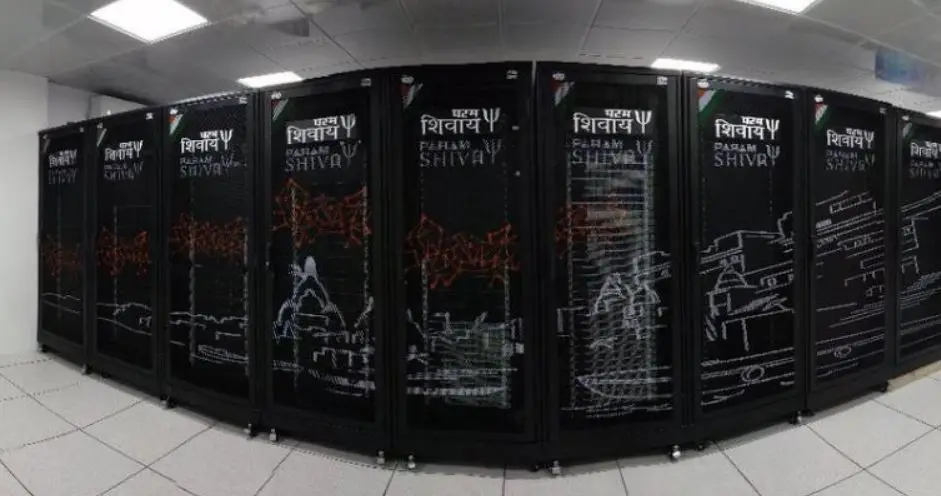Table of Contents
About Param Shivay Supercomputer
Param Shivay the first super computer designed & built under the National Supercomputing Mission by C-DAC (Center for Development of Advanced Computing) at IIT-BHU (Varanasi). Although India’s first supercomputer called PARAM 8000 was launched in 1991 was built by CDAC..
Param Shivay Supercomputer Specification
Param Shivay Supercomputer will Include the following specifications:-
- 833 teraflop capacity built at the cost of Rs 32.5 crore.
- 1 petabyte secondary storage,
- Open source system,
- 223 processor nodes,
- 384 GB per node DDR4 RAM,
- Parallel file system,
- and have CPU and GPU.
Other Supercomputers in India
- At present, Indian Institute of Tropical Meteorology has Pratyush,
- National Centre for Medium-Range Weather Forecasting has Mihir and
- Indian Institute of Science has SERC-Cray as supercomputers in India
Significance of Param Shivay Supercomputer
The National Supercomputer Mission (NSM) is an important initiative from the Government of India. This initiative supports the vision of the government’s ‘Digital India’ and ‘Make in India‘ and it will also play an important role in keeping India in the forefront of the world’s supercomputing map. The research that takes months would be completed in hours or minutes with the help of this supercomputer.”
The problems of common man related to relevant social issues such as irrigation schemes, traffic management, health, an affordable drug will also be taken care of with this supercomputer centre, claims the institute. (IIT-BHU)
About National Supercomputing Mission
- The Mission, launched in 2015, envisages empowering our national academic and R&D institutions spread over the country by installing a vast supercomputing grid comprising of more than 70 high-performance computing facilities.
- These supercomputers will also be networked on the National Supercomputing grid over the National Knowledge Network (NKN).
- The Mission would be implemented jointly by the Department of Science and Technology (DST) and Department of Electronics and Information Technology (DeitY) for over a period of seven years, through the C-DAC and Indian Institute of Science (IISc), Bengaluru.
- The Mission also includes development of highly professional High Performance Computing (HPC) aware human resource for meeting challenges of development of these applications.
- o PARAM Shavak is one such machine that has been deployed to provide training.
- Application areas: Climate Modelling, Computational Biology, Atomic Energy Simulations, National Security/ Defence Applications, Disaster Simulations and Management, Computational Material Science and Nanomaterials, Cyber Physical Systems, Big Data Analytics etc.
Top-500 Project in the World (List)
- Started in 1993, it ranks the 500 most powerful non-distributed computers in the world.
- It publishes an updated list of the supercomputers twice a year.
- Currently, China dominates the list with 229 supercomputers, leading the second place (United States) by a record margin of 121.
- Since June 2018, the American “Summit” is the world’s most powerful supercomputer, based on the LINPACK benchmarks.
- LINPACK benchmark are a measure of a system’s floating point computer power. It measures how far a computer solves a nxn system of linear equations.
- India has 4 supercomputers in the Top-500 list of the world’s top 500 supercomputers with Pratyush and Mihir being the fastest supercomputers in India.
About C-DAC
- It is the premier R&D organization of the Ministry of Electronics and Information Technology (MeitY) for carrying out R&D in IT, Electronics and associated areas.



